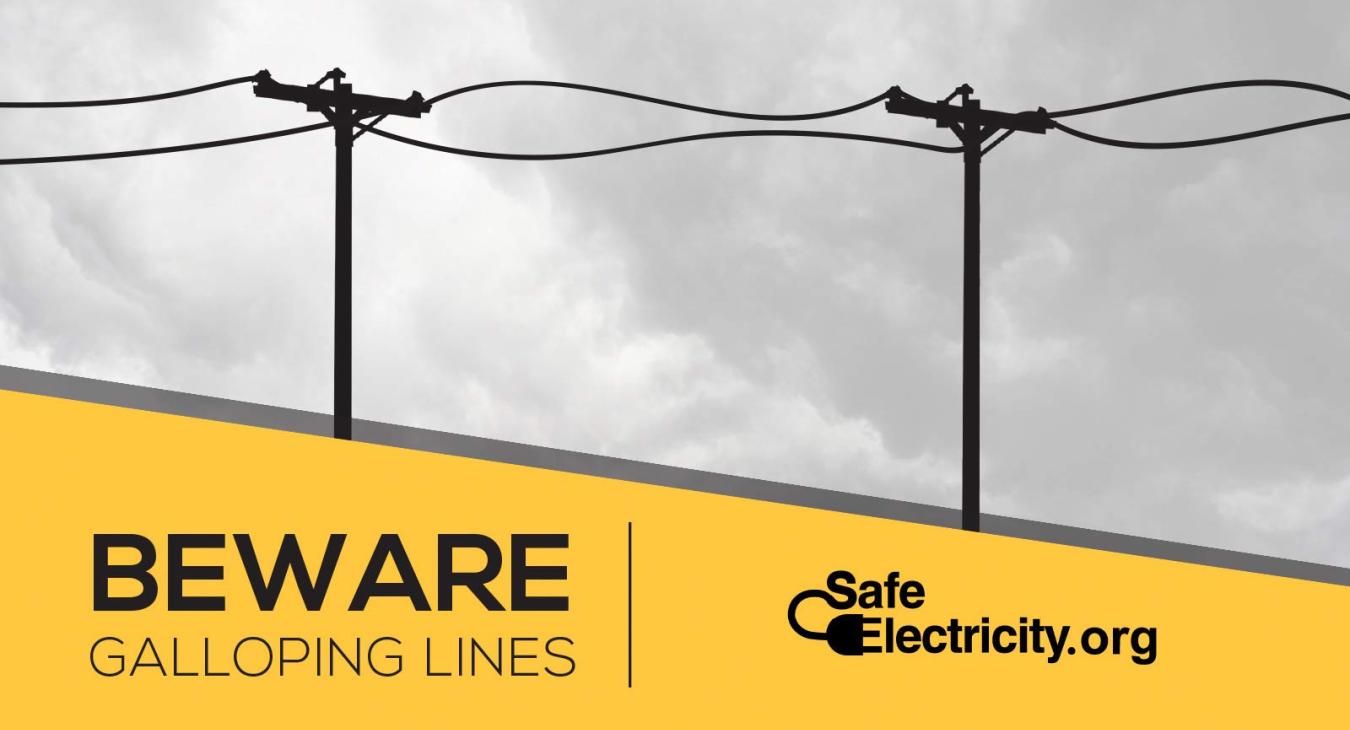How can galloping lines impact power transmission and distribution?
Galloping power lines are typically caused when ice and high winds occur at the same time. Freezing rain creates icicles and odd-shaped ice formations on power lines and conductors. The ice buildup changes how wind and air impact the now misshapen, ice-covered line. This change in airflow can cause the power line to start to bounce.
Once the lines get going, they can bounce and buck enough to hit another line, damage themselves enough to cause a power outage or even fall to the ground.
There is not much a power company can do to alleviate galloping lines, since the wild motion is caused by Mother Nature. To help prevent this, many power lines have special mechanisms, such as twisted wire or round or angular pieces of metal, attached to the line. While they can help, sometimes they are no match for severe ice and whipping winds.
Aside from ice storms, year-round storms can cause damaging winds, which can knock down power lines and blow trees and limbs onto power lines. Keep the following safety tips in mind:
- When you see power lines on the ground, stay away, warn others to stay away and contact the electric utility or 911. Lines do not have to be arcing or sparking to be live.
- Any utility wire, including telephone or cable lines that are sagging or down, could be in contact with an energized power line, also making it dangerous. Do not try to guess the type of line — stay away from all lines.
- Be alert to the possibility that tree limbs or debris may hide electrical hazards. Downed power lines can energize objects around them, such as chain-link fences and metal culverts.
- Keep in mind that a dead line could become energized during power restoration efforts or with improper use of generators.
- Never drive over a downed line. It could start a chain reaction and cause additional poles or other equipment to collapse.
- If you are in a car that has contacted or is near a downed power line, stay in your vehicle. Wait until the utility crew has arrived and deenergized the line. Warn others not to approach the car.
- Only exit a car or cab near or on downed lines if there is a fire. If this happens, cross your arms over your chest and make a solid jump out and away from the car with both feet together. Then hop away at least 50 feet or more while continuing to keep both feet together.
For more electrical safety information, visit SafeElectricity.org.

